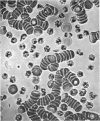Abstract
Red cells parasitized by Plasmodium knowlesi concentrate within the microcirculation of many organs including cerebral capillaries in rhesus monkeys. The possibility that P. knowlesi could alter the rheologic properties of red cells so that they are trapped within capillaries was investigated in the present study. The viscosity of P. knowlesi-infected red cells suspended in Ringer's solution was increased at all shear rates at hematocrits above 30%. At moderate parasitemia the resistance to flow through 5 μ polycarbonate sieves was increased; at high parasitemia the pores were obstructed. Mature trophozoites caused more obstruction than young trophozoites (rings) at any given level of parasitemia. The reduction of deformability of red cells infected by schizonts of P. knowlesi was further demonstrated by their exclusion from rouleaux in a plasma suspension. Therefore, the red cells infected by P. knowlesi become less deformable, and this reduction in red cell deformability may explain the obstruction of cerebral capillaries.
Full text
PDF
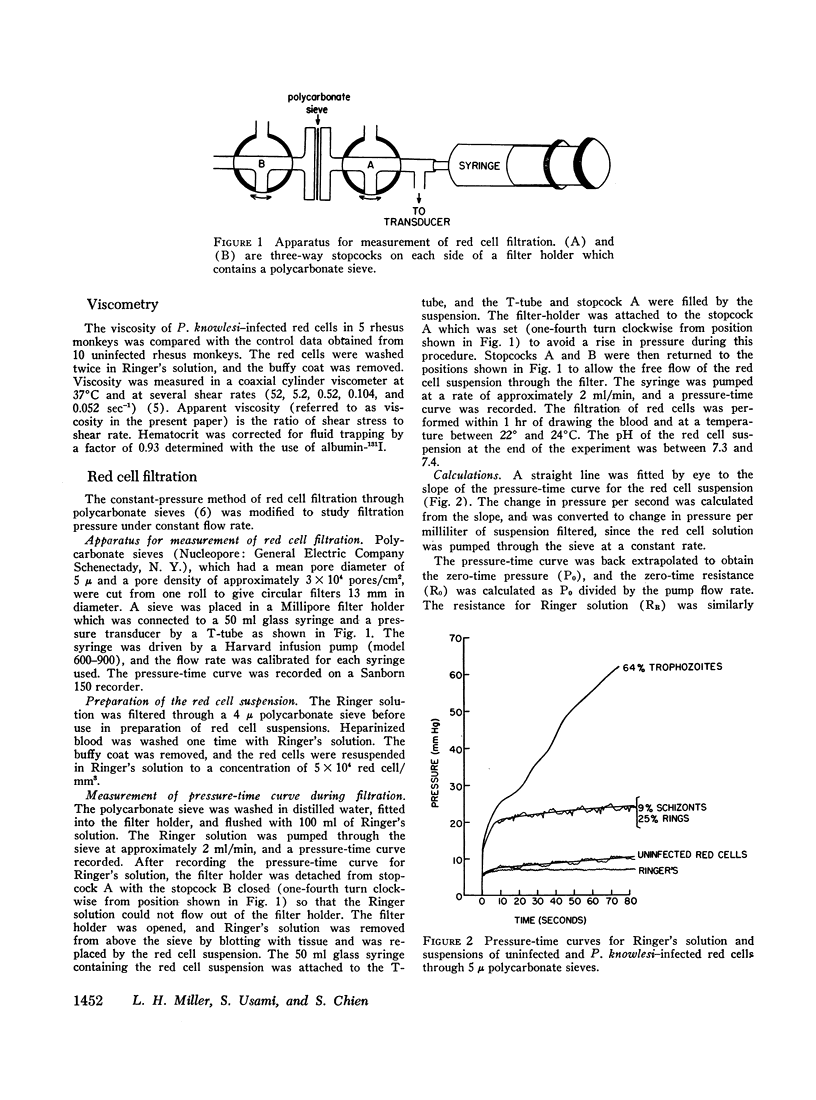
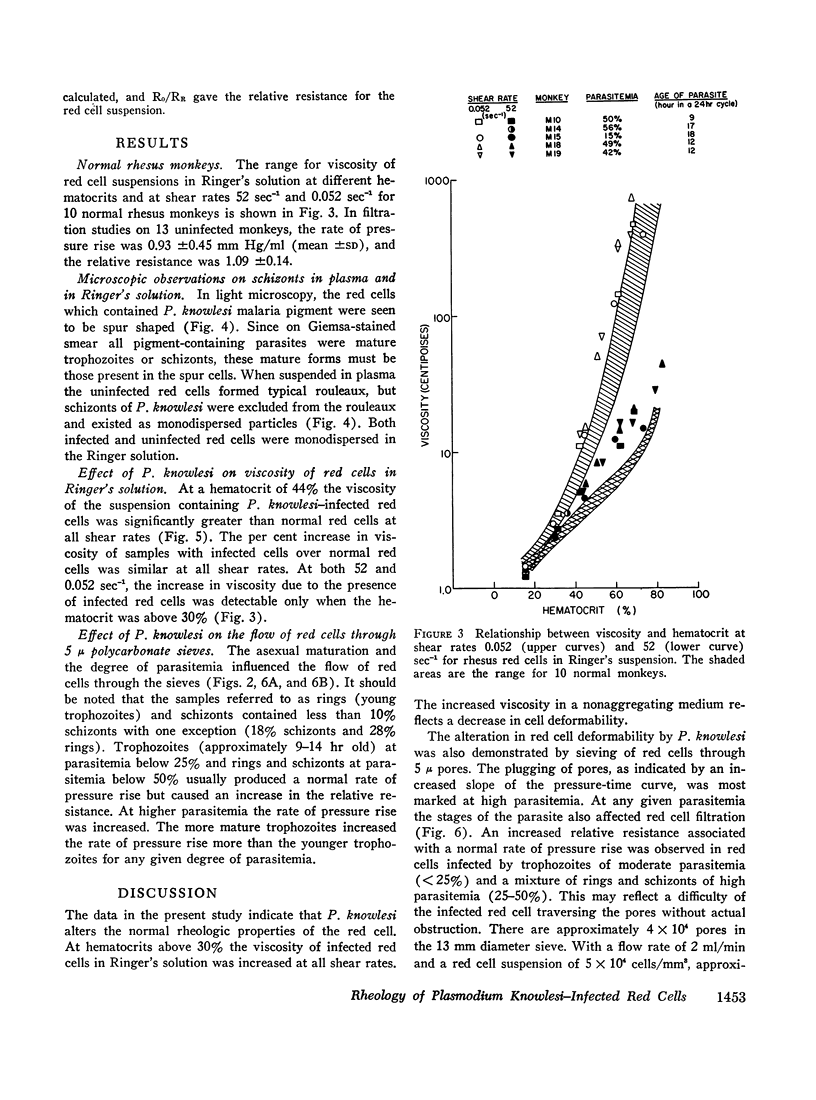
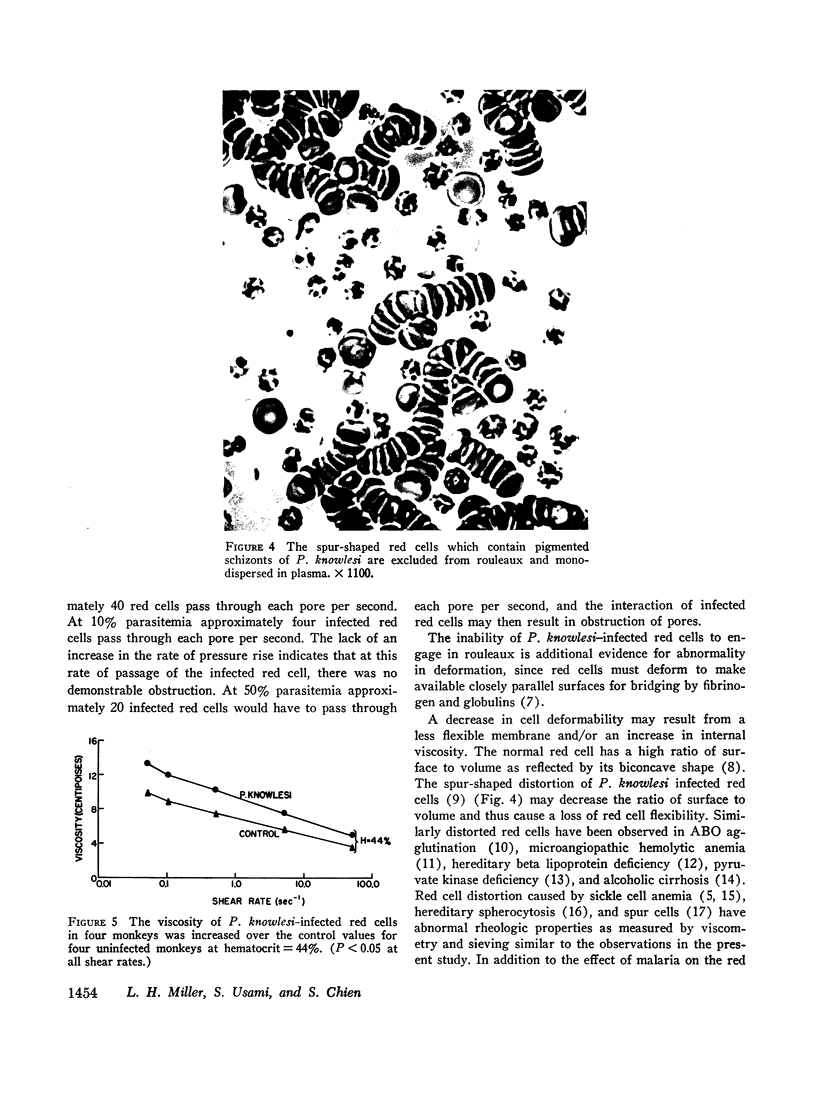
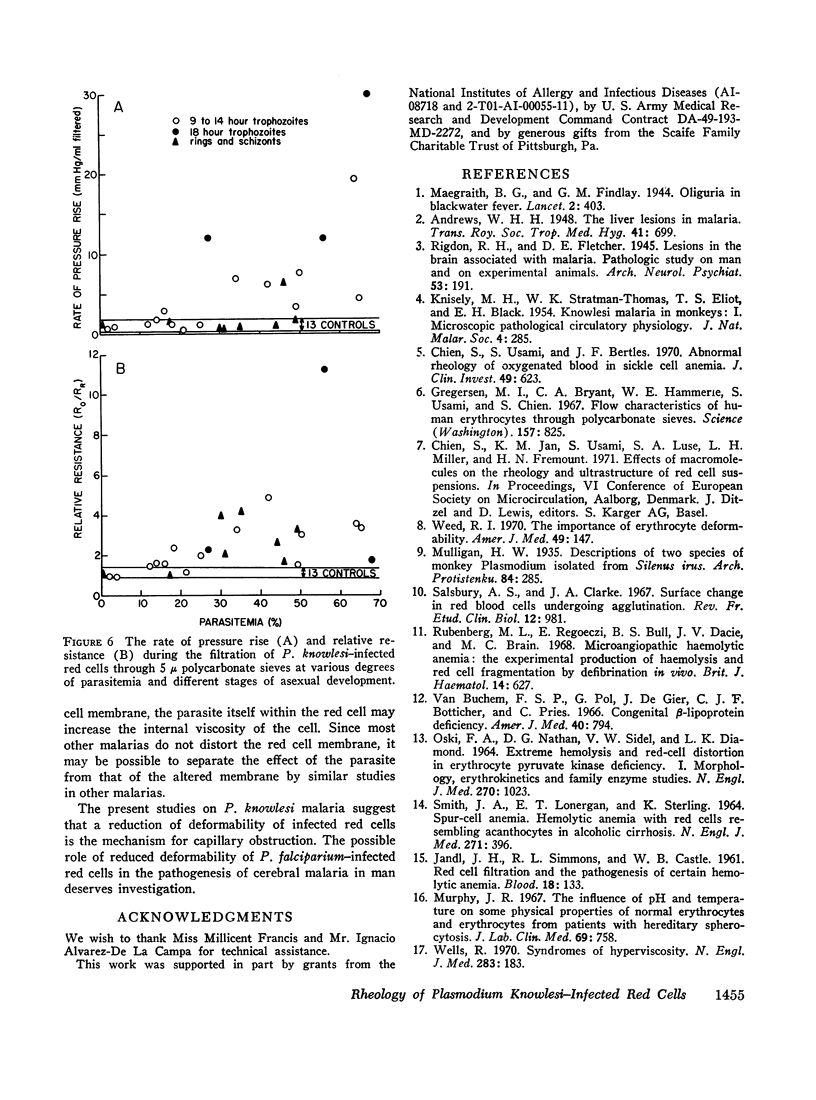
Images in this article
Selected References
These references are in PubMed. This may not be the complete list of references from this article.
- Chien S., Usami S., Bertles J. F. Abnormal rheology of oxygenated blood in sickle cell anemia. J Clin Invest. 1970 Apr;49(4):623–634. doi: 10.1172/JCI106273. [DOI] [PMC free article] [PubMed] [Google Scholar]
- Gregersen M. I., Bryant C. A., Hammerle W. E., Usami S., Chien S. Flow Characteristics of Human Erythrocytes through Polycarbonate Sieves. Science. 1967 Aug 18;157(3790):825–827. doi: 10.1126/science.157.3790.825. [DOI] [PubMed] [Google Scholar]
- JANDL J. H., SIMMONS R. L., CASTLE W. B. Red cell filtration and the pathogenesis of certain hemolytic anemias. Blood. 1961 Aug;18:133–148. [PubMed] [Google Scholar]
- Murphy J. R. The influence of pH and temperature on some physical properties of normal erythrocytes and erythrocytes from patients with hereditary spherocytosis. J Lab Clin Med. 1967 May;69(5):758–775. [PubMed] [Google Scholar]
- OSKI F. A., NATHAN D. G., SIDEL V. W., DIAMOND L. K. EXTREME HEMOLYSIS AND RED-CELL DISTORTION IN ERYTHROCYTE PYRUVATE KINASE DEFICIENCY. I. MORPHOLOGY, ERYTHROKINETICS AND FAMILY ENZYME STUDIES. N Engl J Med. 1964 May 14;270:1023–1030. doi: 10.1056/NEJM196405142702001. [DOI] [PubMed] [Google Scholar]
- Rubenberg M. L., Regoeczi E., Bull B. S., Dacie J. V., Brain M. C. Microangiopathic haemolytic anaemia: the experimental production of haemolysis and red-cell fragmentation by defibrination in vivo. Br J Haematol. 1968 Jun;14(6):627–642. doi: 10.1111/j.1365-2141.1968.tb00369.x. [DOI] [PubMed] [Google Scholar]
- SMITH J. A., LONERGAN E. T., STERLING K. SPUR-CELL ANEMIA: HEMOLYTIC ANEMIA WITH RED CELLS RESEMBLING ACANTHOCYTES IN ALCOHOLIC CIRRHOSIS. N Engl J Med. 1964 Aug 20;271:396–398. doi: 10.1056/NEJM196408202710804. [DOI] [PubMed] [Google Scholar]
- Salsbury A. J., Clarke J. A. Surface changes in red blood cells undergoing agglutination. Rev Fr Etud Clin Biol. 1967 Dec;12(10):981–986. [PubMed] [Google Scholar]
- Weed R. I. The importance of erythrocyte deformability. Am J Med. 1970 Aug;49(2):147–150. doi: 10.1016/s0002-9343(70)80069-9. [DOI] [PubMed] [Google Scholar]
- Wells R. Syndromes of hyperviscosity. N Engl J Med. 1970 Jul 23;283(4):183–186. doi: 10.1056/NEJM197007232830406. [DOI] [PubMed] [Google Scholar]
- van Buchem F. S., Pol G., de Gier J., Böttcher C. J. Congenital beta-lipoprotein deficiency. Am J Med. 1966 May;40(5):794–804. doi: 10.1016/0002-9343(66)90162-8. [DOI] [PubMed] [Google Scholar]



